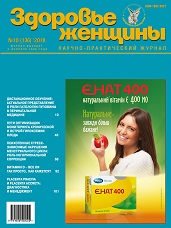Актуальне уявлення щодо ролі патології пуповини у перинатальній медицині (Клінічна лекція)
DOI:
https://doi.org/10.15574/HW.2018.136.10Ключові слова:
пуповина, аномалії, перинатальна патологія, звивистість, обвиттяАнотація
Актуальність проблеми аномалій будови і розташування пуповини визначається їхньою значною поширеністю, взаємозв’язком з розвитком інтранатального дистресу, асфіксії і мертвонароджуваністю. Ця патологія відрізняється недосконалістю діагностики, непередбачуваністю наслідків, недооцінюванням клінічного значення для психоневрологічного розвитку дитини у наступні періоди життя. У статті наведені дані про окремі варіанти патології пуповини, відображено їхнє походження і клінічне значення. Підкреслено важливість цільової уваги до антенатальної діагностики аномалій будови, функції і розташування пуповини для попередження інтранатальної смертності та ускладнень новонародженого.
Посилання
Aryaеv VK. (2003). Neonatologіya. K, ADEF-Ukraіna:110–139.
Shabalov NP, Lyubimenko NP, Lyubimenko VA i dr. (1999). Asfiksiya novorozhdennyih. M, MEDpress:346.
Brehman GI. (2006). Volnovyie mehanizmyi obmena informatsiey v obnovlyaemyih sistemah. Sistemnyie issledovaniya i upravlenie otkryityimi sistemami. Hayfa. 2:87–96.
Altherr P, Berg L, Velfl A, Passolt M. (2004). Giperaktivnyie deti. Korrektsiya psihomotornogo razvitiya. M, Akademiya:160.
Ma’ayeh M, Varughese A, Purandare N et al. (2014, Jan). Hypercoiling of the umbilical cordeis it clinically relevant? American Journal of Obstetrics & Gynecology 210;1:107.
Evtushenko SK, Poroshina EV, Omelyanenko AA. (2010). Sindrom defitsita vnimaniya i giperaktivnosti u detey s izmenennoy i neizmenennoy EEG: novyie podhodyi v terapii. Mezhdunarodniy nevrologicheskiy zhurnal 5(35). Elektronnyiy resurs Rezhim dostupa: http://www.mif-ua.com/archive/issue-13643/
Chagaev ChG. (2011). Patologiya pupovinyi. Pod red. prof. VE Radzinskogo. M, GOETAR-Media:96.
Baergen RN. (2011). Manual of pathology of the human placenta. New York, Springer-Verlag: 540. https://doi.org/10.1007/978-1-4419-7494-5
Collins JH, Collins CL, Collins CC. (2004). Umbilical Cord Accidents: 72.
Costa SL. (2008). Screening for Placental Insufficiency in High-risk Pregnancies: Is Earlie Better? Placenta 29;12:1034–1040. https://doi.org/10.1016/j.placenta.2008.09.004; PMid:18930542
Gilbert JS et al. (2012). Circulating and utero-placental adaptation to chronic placental ischemia in rat. Placenta 33;2:100–105. https://doi.org/10.1016/j.placenta.2011.11.025; PMid:22185915
Machin GA, Ackerman J, Gilbert-Barness E. (2000). Abnormal umbilical cord coiling is associated with adverse perinatal outcomes. Pediatr. Dev Pathol. 3(5):462–471. https://doi.org/10.1007/s100240010103; PMid:10890931
Meng F, To W, Kirkman-Brown J et al. (2007). Calcium oscillations induced by ATP in human umbilical cord smooth muscle cells. Journal of Cellular Physiology 123;1:79–87. https://doi.org/10.1002/jcp.21092; PMid:17477379
Park Ch-W, Park JS, Mi S et al. (2017). Longer latency to delivery is associated with more frequent inflammation-free extra-placental membranes and umbilical cord in the setting of preterm-PROM with intra-amniotic inflammation. American Journal of Obstetrics & Gynecology 216;1:201–202. https://doi.org/10.1016/j.ajog.2016.11.590
Pathak S, Hook E, Hackett G. (2010). Cord coiling, umbilical cord insertion and placental shape in an unselected cohort delivering at term: relationship with common obstetric outcomes. Placenta 31;11:963–968. https://doi.org/10.1016/j.placenta.2010.08.004; PMid:20832856
Proctor LK. (2013). Umbilical cord diameter percentile curves and their correlation to birth weight and placental pathology. Placenta 34:62–66. https://doi.org/10.1016/j.placenta.2012.10.015; PMid:23174148
Rosenbloom JI, Molly J, Stout MJ et al. (2017, Jan). Electronic fetal monitoring patterns on admission and in the active phase associated with elevated umbilical cord arterial lactate at term. American Journal of Obstetrics & Gynecology 216;1,Supplement:S438–S439. DOI: https://doi.org/10.1016/j.ajog.2016.11.489. https://doi.org/10.1016/j.ajog.2016.11.489
Sebire NJ. (2007). Pathophysiological significance of abnormal umbilical cord coiling index. Ultrasound Obstet. Gynecol. 30(6):804–806. https://doi.org/10.1002/uog.5180; PMid:17960724
Timofeev J, Holland M, Clark-Ganheart C et al. (2014, Jan). Assessment of the number of umbilical cord vessels at the time of nuchal translucency screening. American Journal of Obstetrics & Gynecology 210;1, Suppl:S90. https://doi.org/10.1016/j.ajog.2013.10.188
Tuuli M, Shanks A, Odibo A et al. (2014). Umbilical cord arterial lactate compared with pH for predicting neonatal morbidity at term: a prospective cohort study. American Journal of Obstetrics & Gynecology 210;1:21–22. https://doi.org/10.1016/j.ajog.2013.10.065
Weiner E, Fainstein N, Bar J, Kovo M. (2015). The role of the umbilical cord in the genesis of non-reassuring fetal heart rate leading to emergent cesarean sections. American Journal of Obstetrics & Gynecology 212;1:134.
##submission.downloads##
Опубліковано
Номер
Розділ
Ліцензія
Авторське право (c) 2018 Здоров’я жінки

Ця робота ліцензується відповідно до Creative Commons Attribution-NonCommercial 4.0 International License.

